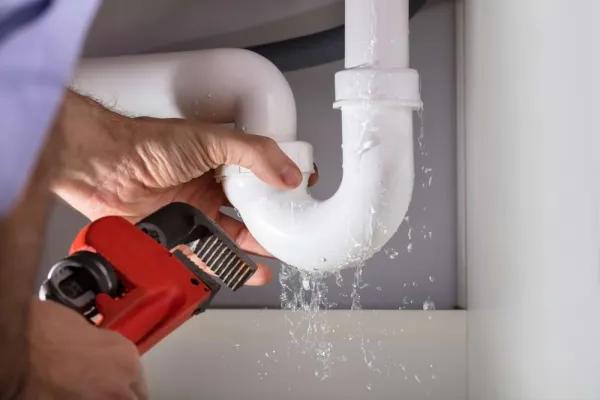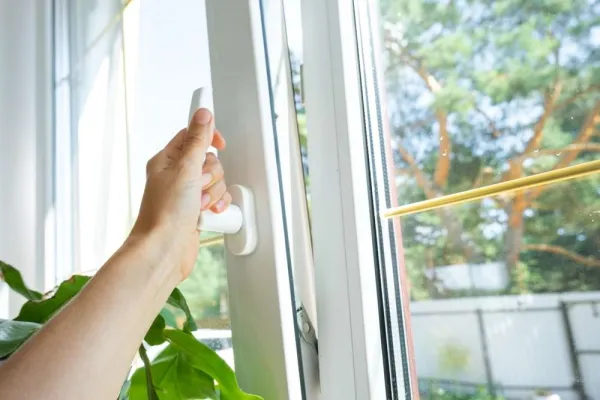Rising damp is not only a TV sitcom from the 1970s (for those of us old enough to remember) but a real problem when it comes to your home. Dangerous to health and to the property, rising damp is something that if not tackled, can lead to several issues.
Able to deplete your physical wellbeing, your property value (up to 53%!) and the condition of your home, we looked at how to stop things before they get too severe.
More commonly found in older buildings, it is something you may not encounter at all in your home. However, many types of damp exist, and it is because of this that if rising damp does make an appearance in your home it often goes untreated. Leading to problems you were not aware of, possibly until it is too late.
What is rising damp?
Rising damp is a form of dampness that occurs when groundwater finds its way inside walls and floors. As this water makes its way through the fixtures, rising up them as it goes along, the nitrates, chloride and sulphates, which would be soluble in groundwater, travel through building materials. Often you will see crystalline deposits on surfaces of concrete, brick, stucco or natural stone surfaces. This will be due to water being present on or in the masonry surface.
If the water has got into walls the damp marks will show normally at a height of no more than one metre high.
What causes rising damp?
Rising damp can happen due to several reasons but is commonly attributed to the ones we have listed below.
- If no damp-proof course (often seen abbreviated to DPC) has been installed rising damp can be quite common. Especially if the property is old where it was often not installed at all.
- Where external ground levels (driveways, paths etc) have been raised over the course of a few years, the DPC becomes bridged making it ineffective.
- A faulty installation of the DPC
- The DPC has passed its natural lifespan and has now become ineffective
How can I spot rising damp?
There are a few indicators that rising damp could be prevalent in your house and spotting these may help you differentiate from the other forms of damp you may encounter. Look out for:
- Tide marks of salts (the crystalline deposits we mentioned earlier)
- Dark patches on walls that are damp to the touch. Check the brickwork and masonry rather than plaster or wallpaper
- Staining of wall coverings, peeling wallpaper and blistering paint
- Damp and musty smells
- Discolouration of plaster
- Decaying timber. Skirting boards or floorboards for example
How can you treat rising damp?
The simplest way to treat rising damp is to stop any capillary action within the building. Capillary action is where the moisture rises upwards through cracks and holes within the walls. When evaporation begins to dominate the capillary action, the damp will be able to stop but finding where it starts is the hard part.
Professionals can assess the situation and see what type of work is necessary. They will be able to locate the cause and fix it for you. Sometimes though, it is easy enough to tackle yourself.
If the assessment showed you where the problem is, and you feel you can solve it yourself, you could invest in a treatment kit. This contains an injection cream that would stop the spread and remove the problem.
Sometimes it can be a simple remedy like improving ventilation. Simply opening windows, installing or using your extractor fans or purchasing a dehumidifier can all help.
Another problem that can also be easily addressed is guttering. If your gutters or pipes are blocked the leaks created could lead to the brickwork being penetrated by the build-up of water.
If none of the DIY jobs solve the problem, you will need to turn to professionals. It may be suggested that you have the whole DPC refitted. This can be expensive, but it is a long-term fix. It will not only treat the rising damp you have now but will prevent further cases in the future.
Current figures indicate you could spend up to £5000 rectifying rising damp so get advice from the experts before taking on this potentially expensive home repair job.
Have you struggled to tackle rising damp in your home? Perhaps you are looking to sell and move to something with a more durable DPC! Speak to our team at SOLD. As expert online estate agents, we specialise in selling houses quicker than anyone else. Plus, we sell your house for free. No fees. No stress. No worries. You can even get a free online house valuation so you know what to expect when you sell your home. Get in touch today!
















